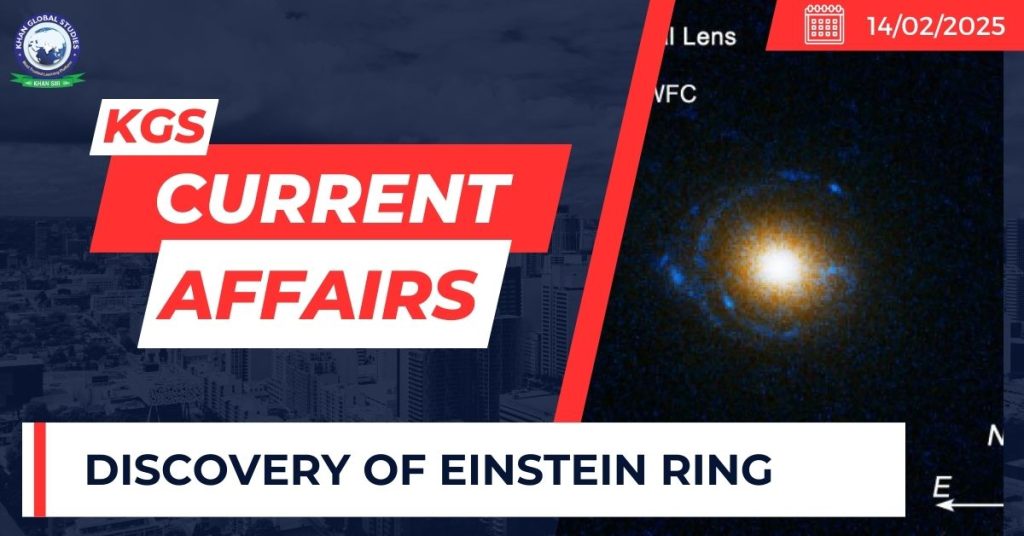Context:
The European Space Agency’s (ESA) Euclid space telescope discovered a rare light ring called an Einstein ring around an elliptical galaxy called NGC 6505, located 590 million light-years away.
What is an Einstein Ring?
An Einstein ring is a ring of light around a galaxy, dark matter, or galaxy cluster caused by Gravitational Lensing.
- Gravitational lensing happens when a massive celestial body (like a galaxy) creates a gravitational field that distorts and amplifies the light from distant galaxies that are behind it but in the same line of sight.
- The object causing the light to bend is called a gravitational lens.
The massive object, like the galaxy NGC 6505 in the Draco Constellation, acts as a gravitational lens, distorting and magnifying the light.
Einstein rings are named after Albert Einstein, whose theory of relativity predicted that light could bend and brighten around cosmic objects.

Einstein rings are very rare, occurring in less than 1% of galaxies.
The first one was discovered in 1987, and only a few others have been found since.
These rings cannot be seen with the naked eye and require powerful space telescopes like ESA’s Euclid or NASA’s Hubble to be observed.
Why Einstein’s Rings are Important?
Study of Dark Matter:
- Dark matter makes up 85% of the universe’s matter but cannot be directly seen because it doesn’t emit light.
- Einstein’s rings help scientists study dark matter indirectly because the bending of light shows the gravitational effects of dark matter.
Understanding Distant Galaxies:
- Einstein rings help scientists observe galaxies that are too faint or far away to be seen otherwise.
- The bending effect makes these distant galaxies appear brighter, allowing astronomers to study their structure and properties with more ease.
Insights into the Universe’s Expansion:
- Einstein rings help measure the distance to faraway galaxies and understand how fast the universe is expanding.
- By studying the light from these galaxies, scientists can track how space is stretching.
Refining mass models:
- The shape of an Einstein ring can help determine the mass distribution of the lensing galaxy.
About Euclid Space Telescope and mission:
- Euclid is named after the Greek mathematician Euclid of Alexandria, who lived around 300 BC and founded the subject of geometry.
- Euclid (launched in 2023 by SpaceX Falcon 9) is a medium-class mission in ESA’s Cosmic Vision Programme.
- Its operational orbit is Lagrange point 2.
- Euclid is a European mission, built and operated by ESA, with contributions from NASA.
- ESA’s Euclid mission is to explore the composition and know about the evolution of dark matter and energy.
- Euclid will measure the distorted shapes of billions of galaxies over 10 billion years of cosmic history, thus providing a 3D view of the dark matter distribution in our Universe.
- Nominal mission lifetime is six years, with the possibility of extension (limited by the amount of cold gas used for propulsion).
- ESA selected Thales Alenia Space as the prime contractor for the construction of the satellite and its service module, with Airbus Defence and Space choosing to develop the payload module, including the telescope.

